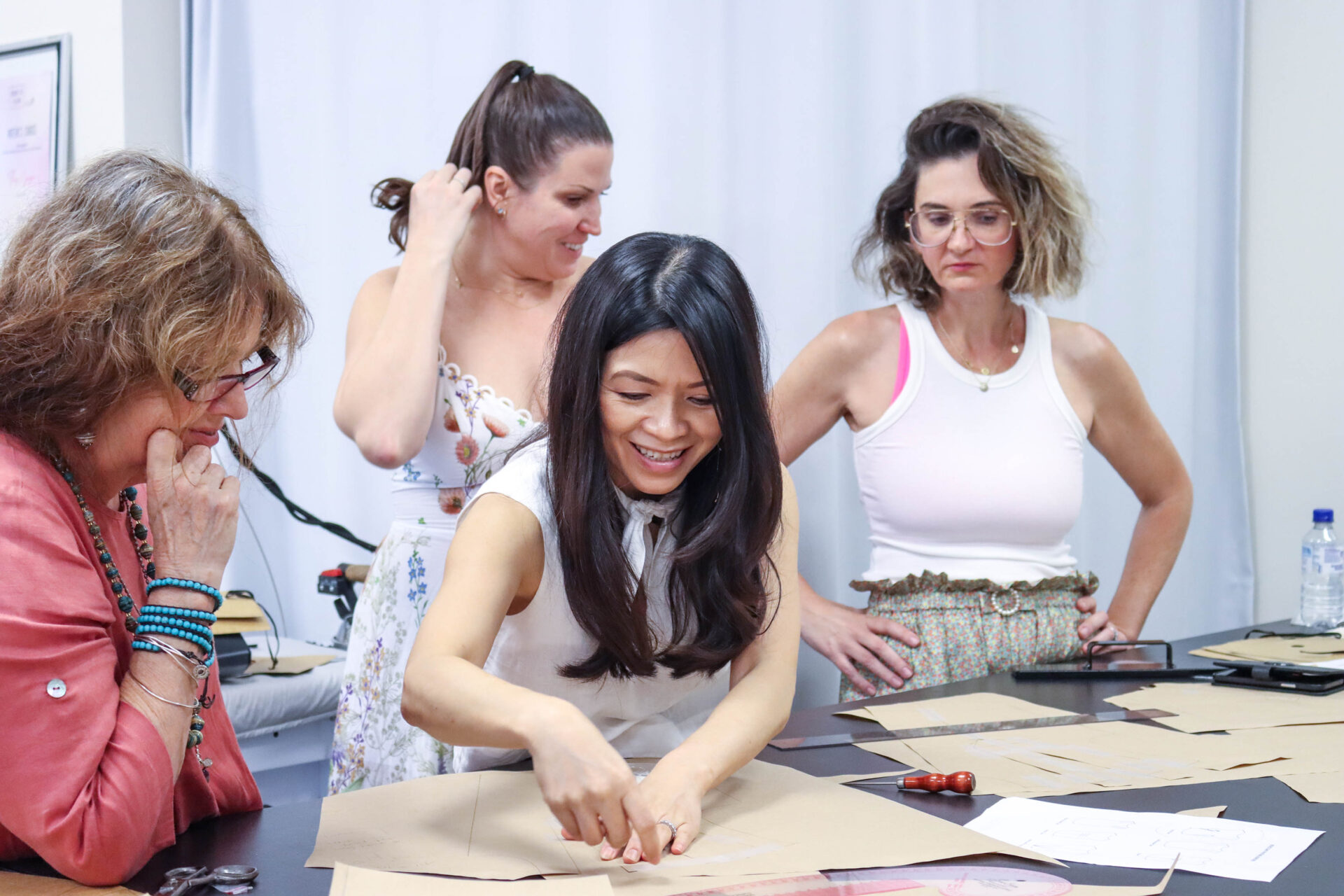
Meet Thuy Nguyen, The Patternmaker Behind The Tansey Top
Meet our very first ‘Peppermint Pattern’, the Tansey Top! To bring our vision to life, we worked with renowned fashion educator, designer and consultant Thuy Nguyen of Fashion360. Based in Brisbane, Thuy has worked with major Australian labels and is known for her considered approach to body shapes and immaculate detail, so we knew that the meticulous Thuy was the one to perfectly draft our design.
Renowned in fashion circles for both her technical expertise and industry know-how, Thuy equips sewists and emerging designers with the skills they need, from range-planning to pattern development and sampling. Thuy worked with artist and ceramicist Erin Lightfoot to create Erin’s first clothing line. “I had to jump at the chance because I knew the resulting collection would be created with the eye for elegance and expertise in fit that comes from Thuy’s extensive fashion knowledge,” said Erin.
When we asked for her top tips for sewing the Peppermint Tansey Top, Thuy’s response was typically forthright: “Follow the instructions and don’t take shortcuts.” Naturally, she’s a stickler for pressing seams and, when the time comes to create that lovely neckline, she says to go slow and use small stitches.
Thuy is passionate about teaching others to make their clothes. “Sewing is an artful skill that’s been diminished due to the excessive influx of fast fashion,” she says. “I encourage people to learn the art to fully appreciate our everyday attire and to be able to distinguish quality from what’s not. Of course, it’s also a great skill that comes in handy around the home!” Read more to hear about Thuy’s journey from Barbie stylist (and lolly connoisseur) to thriving business owner and designer mentor.
photos FASHION360
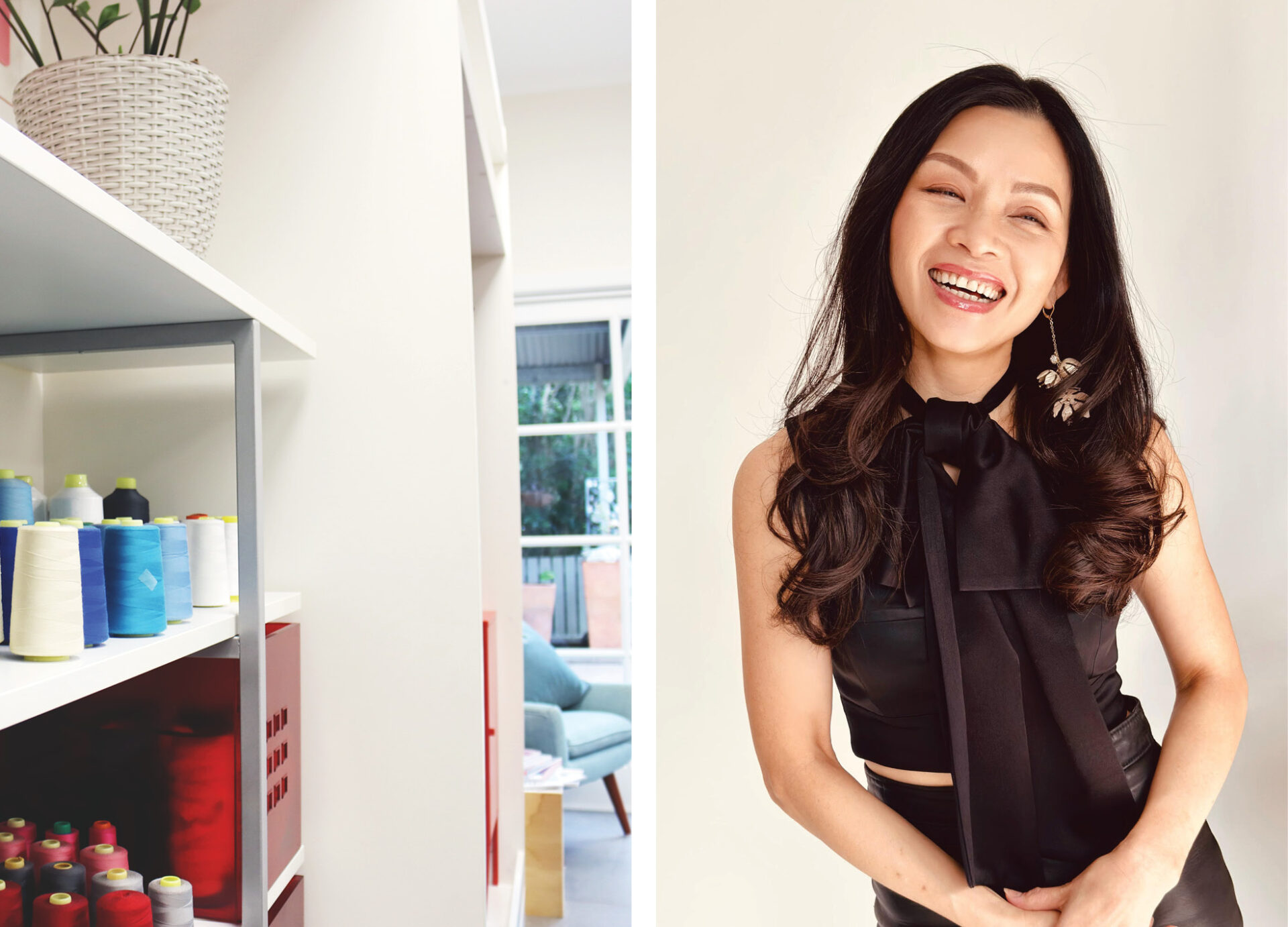
Tell us about your journey into the sewing world…
My journey started as a nine-year-old child who was obsessed with Barbie dolls and eucalyptus lollies… actually, just lollies in general! Having escaped from Vietnam with my family at the beginning of the 1980s, my parents left their home and everything else behind in a bid to find freedom and a better education for their four kids.
They rebuilt our family resources from scratch through pure hard work, six to seven days a week. Needless to say, toys and junk food rarely made it into the family’s weekly spending budget! So, when a school friend decided to give away one of her Barbies (with the bendable arms), I was so thrilled that I decided she was going to have the best wardrobe of all the Barbies that appeared at school!
My mother and aunt were both outworkers, sewing for various labels at the time, so there were always plenty of extra panels in a variety of fabrics, colours and textures that were not used. I proceeded to teach myself by analysing clothing shapes and observing my mother assemble cut panels into complete garments. From these observations and through a combination of draping, cutting, hand stitching and machining, my doll eventually had an outfit change for every day of the week. This caught the interest of my friends, some of whom eventually requested to purchase outfits for their Barbie dolls. This was the genesis of my creative journey as a designer, sewer and some might say entrepreneur, allowing me the means to purchase plenty of my favourite eucalyptus lollies and other sweets at the local corner store.
My sewing and random pattern-making skills continued to be acquired organically during my primary and high school years, through a process of trial and error and accessing help from my mother when she had a spare moment. Although generally an A-student in most subjects, at least before my senior years, art and fashion manifested as an obvious strength throughout my schooling and much to my parent’s dismay, I preferred it as my career of choice.
A month after finishing three years of intense study at Mount Gravatt College in the early 1990s, which was considered the best fashion and design education precinct in QLD at the time, I landed my first contract job to develop and make all the uniforms for physio students at The University of QLD. It was an all-consuming project, forcing me to apply all my technical and practical skills and business theory as well as a nonstop supply of adrenaline to meet the delivery deadline. Upon reflection, I realised it was a feat to be proud of. I had literally designed to a brief, made, sampled and graded patterns, booked and measured up every student, took orders, took deposits, ordered fabric, cut, made, pressed, folded and bagged every single item, met the delivery requirements and got paid!
This was the trajectory for all of my working life where I ended up in relatively long employment by brands Addable and Daniel Lightfoot as well as freelancing for Little Workers, Sass, Le Femme Collections and Montego Designs, to name a few. Alongside working for others, I managed to run a small business designing and making special events and bridal couture creations for 10 years, allowing me a channel for freedom of creative expression.
15 years on from 2010, equipped with diverse knowledge from industry experience, I decided to convert my accomplishments into education and training through workshops and mentoring, as well as providing development services in patterns and samples. These actions were achieved at AICD, QUT and now in my own business at Fashion360. All in all, the journey from sewing those very first Barbie outfits to date has been very fast-paced with steep climbs, but I’m not sure I would have had it any other way. Did I mention the recent launch of my new fashion brand, Decimal the Label…?
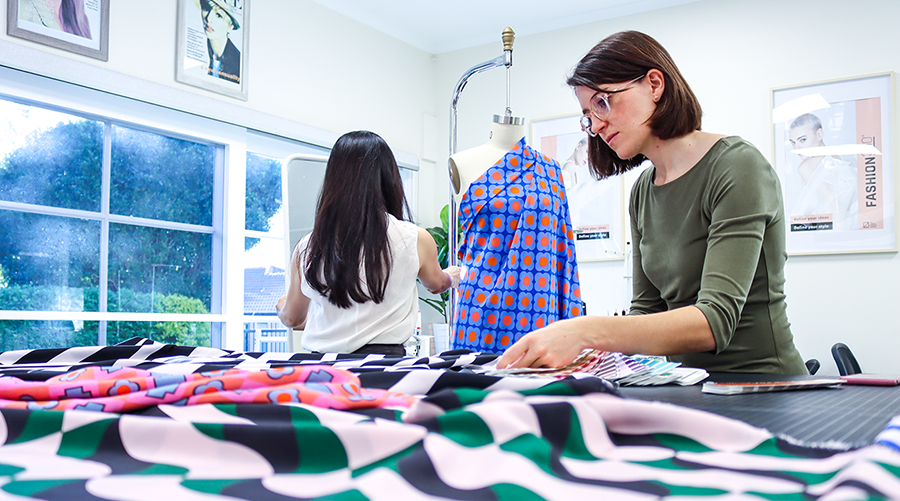
ERIN LIGHTFOOT AND THUY NGUYEN
What is Fashion360 and how did it come about?
Fashion360 emerged as a sub-brand under QUT Creative Enterprise Australia (CEA), a subsidiary of the Queensland University of Technology. The company was set up as the first of its kind in Australia back in 2008, whose mission was to support and nurture creative businesses through mentoring, workshops, investment and events. CEA’s fashion element was initially set up within the realms of an incubator for emerging designers to equip themselves with business and industry knowledge as well as a stitchlab with industry machines, tools and equipment, and workspaces to reside in.
Different tiered memberships were offered, the main being an all-inclusive resident desk space and monthly business mentoring, with production management services offered on a paid basis. I entered the Fashion Incubator in 2012 as a fashion technical expert where practical mentoring was provided alongside patterns, samples and other paid services as well as assisting designers with their production. I adopted a new title in 2016 as fashion development manager, and in turn, designed and introduced a structured business program called The Fashion Accelerator. This was a six-month schedule of workshops and practical applications where I brought in industry experts to facilitate and provide tailored mentoring for each designer, taking them from concept through to all areas required for the launch of a new business and brand.
The onset of this program emerged from my observation of designers getting distracted and losing focus, resulting in constant change of minds which equated to the loss of much-needed finance. The program always culminated with a fashion showcase and business pitch, all beneficial to each individual as it allowed them a sense of achievement to then continue to the next stage of their business.
The Fashion360 brand was born in 2017 out of the need to create more clarity for marketing purposes and differentiate from other CEA program offerings. Fashion360 grew and extended its program offerings, including plans for its format to be duplicated in Bangkok, Thailand in September 2020 and Cape Town, South Africa in February 2021.
COVID-19 completely erased all plans and due to a substantial loss in income, QUT withdrew all funding, resulting in its closure on 30th September 2020. Amongst all the loss, however, there emerged a silver lining. I was provided with the opportunity to transfer the branding rights and all Fashion360 IP including contents within the Stitchlab. I swiftly transformed a large garage space into what is now the new home of Fashion360 where the fundamental vision to nurture new talents as well as provide services to established designers is integral to its existence.
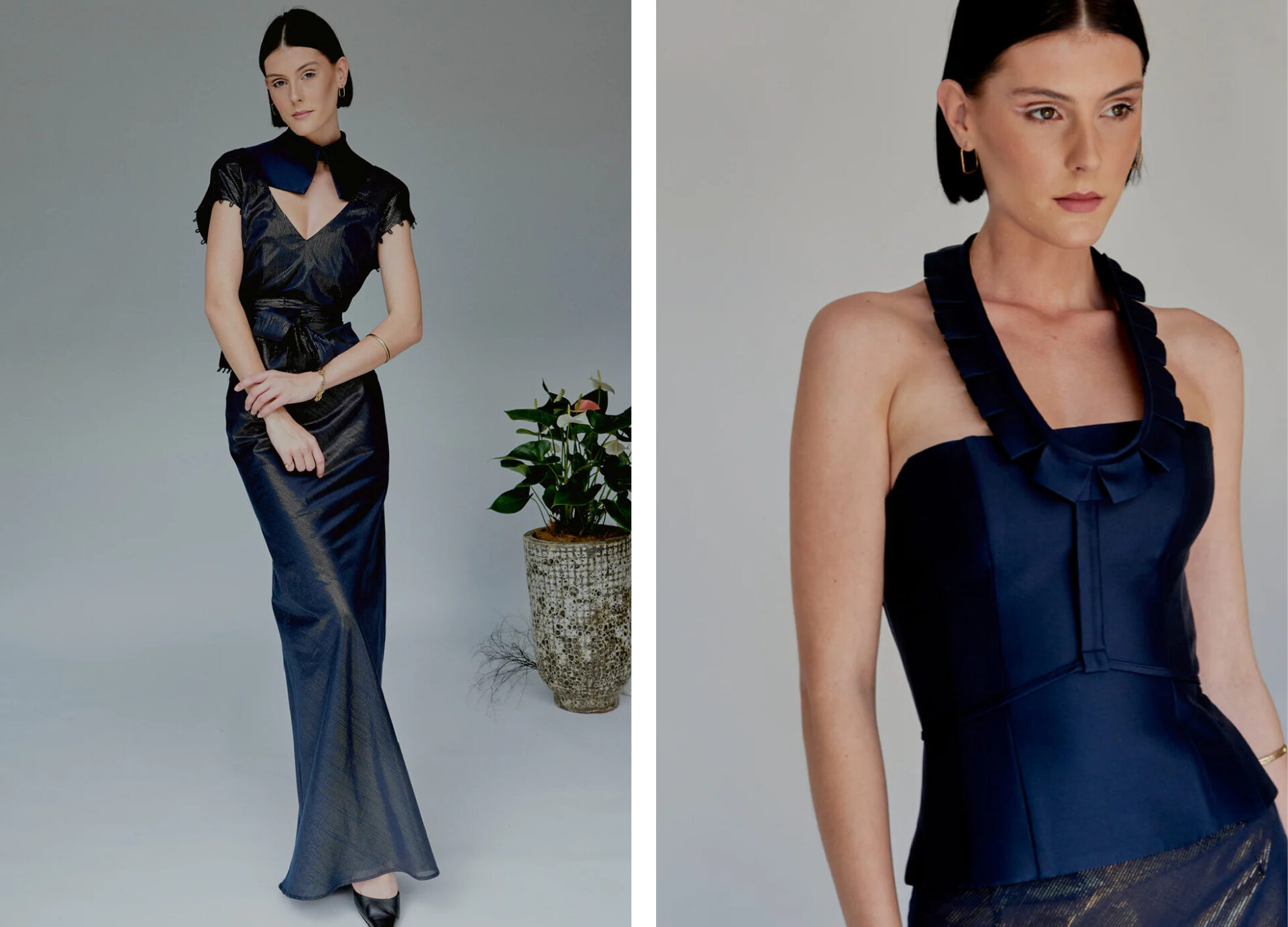
DECIMAL BY THUY NGUYEN
Do you think the manufacturing industry has changed over the last few years for clothing brands and makers?
Manufacturing in Australia has reemerged as a much-needed option for the industry, however, is not the only option for most brands – particularly those that require special applications to their designs and those with more complex techniques. This is due to the lack of specialised skills as well as specialised machinery, a problem resulting from nearly 20 years of cheaper offshore manufacturing. It will likely take another 10 years before Australia is well-equipped to service the industry efficiently, though high labour costs will continue to be at the forefront of resistance to adoption.
Many brands opt for the combination of onshore small runs and offshore larger quantities to balance the cost while ensuring their position does not become compromised should another COVID-19 situation arise. In a perfect world, my hope is for fashion brands to reduce quantity with more focus on quality, allowing the justification in a higher price point. If most get on board, there will be less of a need to constantly mark down and in tandem, reduce excessive clothing waste… Is this so unachievable?
In a perfect world, my hope is for fashion brands to reduce quantity with more focus on quality, allowing the justification in a higher price point.
Why are you so passionate about teaching others to sew?
Sewing is an artful skill that has been diminished due to the excessive influx of cheap fast fashion. I am compelled to encourage people I meet to learn the art, to fully appreciate our everyday attire, and to be able to distinguish between quality from what’s not. Of course, it’s also a great skill that comes in handy around the home and who knows, you can potentially translate it into revenue!
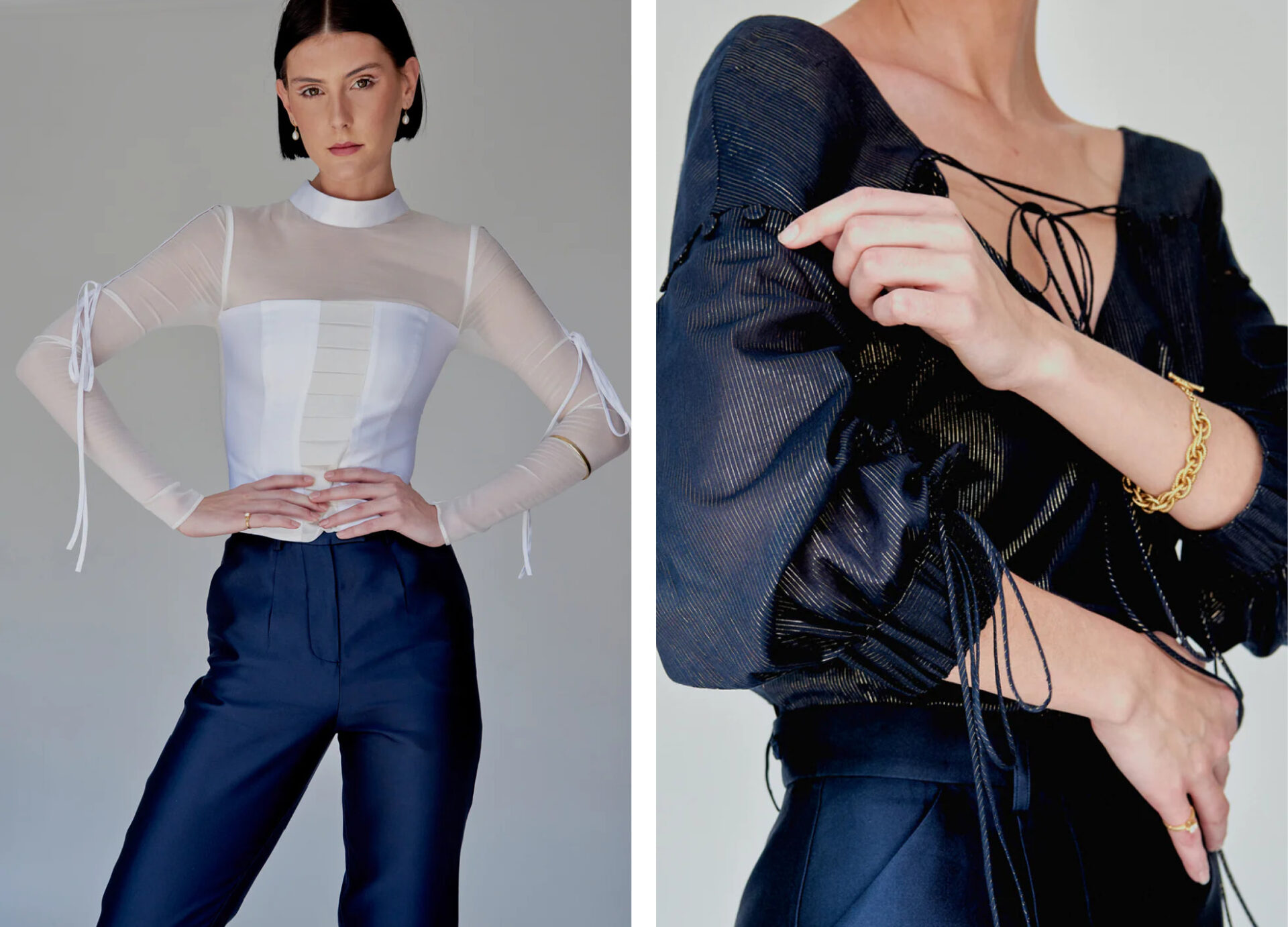
DECIMAL BY THUY NGUYEN
Any words of advice to sewists making the Tansey top?
1. Follow instructions and don’t take shortcuts – tips are provided to help make the process easier.
2. Press seams as you go – assists with accuracy and neatness
3. Go slow and use small stitches around the edge of the neckline
4. Take the time to adjust your sewing foot should roping start to occur during a topstitching or hem application.
5. For an even, well-distributed gather, make sure you prepare two wide gathering stitches 5 – 6mm from each other and stitch the top yoke panel to the lower section between the two gathered stitches. This will control the gathers and give a more even distribution as well as avoid fold-over issues.
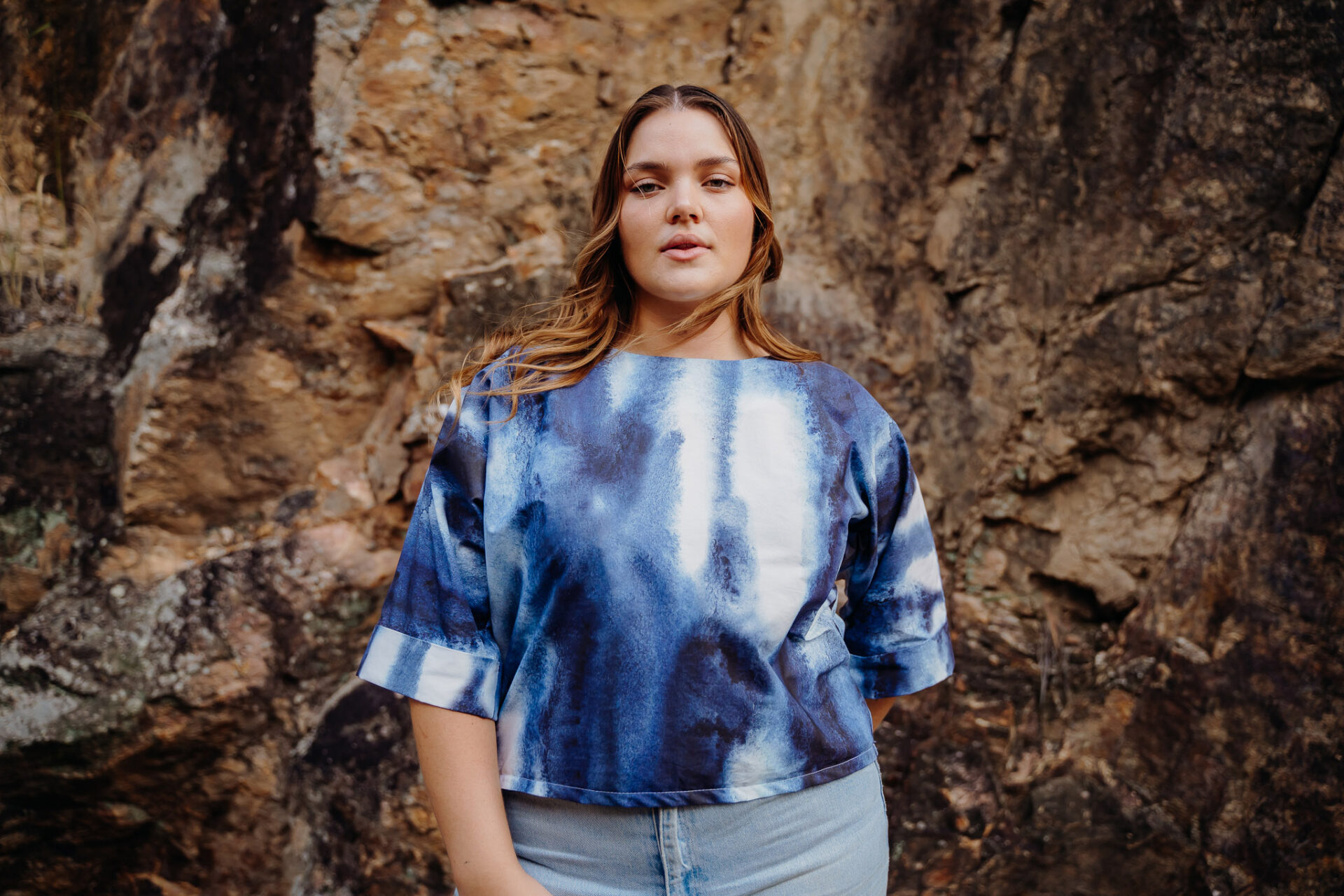
Get the pattern! The print version of Issue 61 comes with a free printed pattern of the Tansey Top! The digital pattern is also free when you buy a digital copy of Issue 61 directly from us or Zinio (including digital subscriptions.). Otherwise you can purchase it under our ‘pay-what-you-like’ initiative – how cool is that?!


